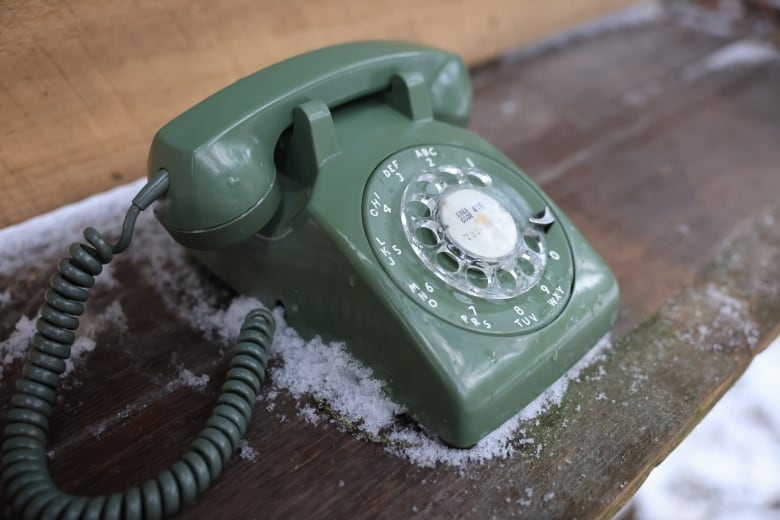
Somewhere along the Van Tassel Lake Trail in Digby, N.S., Jonathan Riley dusts the snow off an unconnected olive green rotary phone that’s sitting on a wooden shelf, almost camouflaged in the woods.
He picks up the receiver, dials and starts to talk.
Instead of entering a number, he spelled out the name of his late friend.
“I just share some of the things that she’s been missing. I guess it’s been six months now. I’ve called her two or three times from here. Just to stay in touch.”
Riley, who is a trail co-ordinator with the Municipality of the District of Digby, set up the phone after seeing one on Instagram along the Appalachian Trail in New York State.
“The idea just clicked with me right away that it might be something that would help people,” he said.
From Japan to the world
Known as kaze no denwa, or “wind phone,” the idea was born more than a decade ago in northeastern Japan as a way to stay connected to the dead.
In 2010, a garden designer named Itaru Sasaki was mourning the loss of his cousin and needed a place to release his grief. He set up an old-fashioned phone booth in his garden with an unconnected rotary phone inside.
“Because my thoughts could not be relayed over a regular phone line, I wanted them to be carried on the wind,” he said in a documentary by Japan’s public broadcaster, NHK.

When the Great East Japan Earthquake and tsunami hit the area a year later, washing away whole towns and stealing the lives of nearly 20,000 people, he opened the phone to the public to help friends and relatives of those who died to deal with their grief.
That NHK documentary caught the attention of Newfoundland-born author Heather Smith.
“I was really struck by the children, the children that were entering the phone booth to speak to their lost loved ones,” she said, “and I really wanted to capture that in a picture book.”
The Phone Booth in Mr. Hirota’s Garden
Smith and B.C.-based illustrator Rachel Wada reached out to Sasaki to get his blessing to tell his story.
“He did say, ‘Please do so with a strong understanding of the reality of this disaster and just how devastating it was,'” Smith recalls. “I have a philosophy that children’s picture books can deal with most topics and they just need to be told in a gentle way.”
Smith and Wada’s book, The Phone Booth in Mr. Hirota’s Garden, was published in 2019. Smith says it has been used in schools, church services of various denominations and funeral homes.

“It’s a beautiful thing, the wind telephone,” she says, “it’s a beautiful thing to have that hope that your words are riding the wind.”
Replicas have been built in a number of countries in recent years.
A website set up to track the growing trend says that in Canada they have been installed in Newfoundland, Quebec, Alberta, British Columbia and now Nova Scotia.
We keep grief in the private realm
Mary Ellen McDonald is happy to see that her province has a wind phone of its own. She’s a medical anthropologist at Dalhousie University who specializes in grief literacy.
“What I love about the wind phone is, it’s acknowledging the private nature of grief,” she says. “It’s in a public place, which is normalizing grief. It is bringing it out and saying it belongs in our world.”
She says Western culture tends to shy away from grief because it is messy, uncomfortable and ugly.

“We kind of have this social pressure. Keep your grief private and then leave your private place and go into the world, into work, into your faith community, into a shopping centre. Leave your grief back in the private realm, don’t bring it out to the public.”
Back on the Van Tassel Lake Trail, Riley says the wind phone has opened up conversations with more people about death and grief, which he says is healthy.
“Like, how do you deal with your grief? And there’s a million ways to do it. I think there’s as many ways as there are people. So this is just another way.”
MORE TOP STORIES












